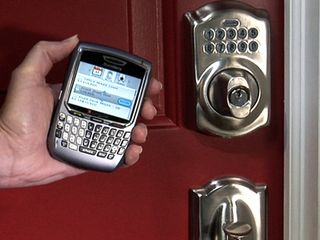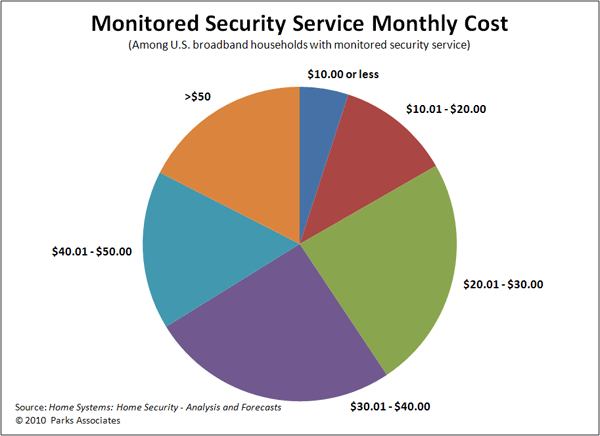PC-Based Home Security: Do It Yourself
We test products that let you monitor and protect your home without the need for an outside security company's services: D-Link, Axis, Logitech, Schlage

In Pursuit Of Better Security
A generation ago, many of us expected to be living in automated homes by now, perhaps with robots tending to our everyday, menial needs. Ten years ago, many still thought that by 2011 our homes would at least be marvels of networked security. So here we are. The need for physical home security sure hasn’t slackened, but how far has computing technology come in helping? We see movies in which action heroes must regularly circumvent elaborate biometric safeguards and all manner of computer-based protection. Do such things exist for everyday homes? If so, are they affordable and easy to set up?

Many people are content to call a traditional security company, get some sensors installed, plant a
This house protected by…” sign out front, and call it a day. However, according to Parks Associates, “the average monitoring fee for a U.S. household increased from $28.60 to $32 between 2008 and 2010.” The collapse of the housing market barely caused a hiccup in home security. As you can see from this pie graph, a decent-size chunk of subscribers pay more than $50, exceeding $600 per year out of pocket. Big security companies will point out that there’s a back-end benefit to monitoring in the form of lower home insurance rates. Of course, that’s not much incentive if you want more security for your apartment. Also, I’ve never had an insurance agent ask me anything beyond, “Do you have home security monitoring?” They’ve never asked me who the provider was, how many sensors or cameras were in place, or anything else. Just yes or no.

The downside with most conventional home security is that it hasn’t really changed from the 1980s. A well-executed smash-and-grab will be in and out in under two minutes, and that $30/month security system, complete with door, window, and motion sensors, will have saved you the trouble of dialing the police yourself.
“Ahh,” you say, “but now they have systems with video surveillance.” Very true. Of course, those systems cost a lot more. You can order a security surveillance kit from the likes of Swann or Lorex, but most of these still use CCTV cameras, and that means very long video cable runs, BNC connectors, and resolutions that top out at 450 lines, just like your old standard definition TVs. You probably also need a DVR and dedicated monitor to record and display all of the footage. This requires a remote control, DVR programming, and so on. Depending on the kit, you might be able to get alerts and remote viewing of your video streams, but this entails a higher-grade product which often costs more.
We prefer IP-based surveillance cameras for many reasons, including: 1) They use standard Ethernet cables or WiFi. 2) The range of functionality is often much broader than CCTV-bases products. 3) Resolution tends to be higher on IP cameras, which can yield clearer images. 4) The range of apps often available for IP cameras is much better than being locked into a single title from one security vendor.
In general, IP-based home security is easy, relatively cheap, and so much more flexible than conventional security. Devices plug into the network rather than any given PC, and you can often interact with them from anywhere across the Internet. We set out to get a sense for the kinds of products available in today’s IP-based home security market and how hard or easy they might be for the average person to set up.
Sign up to get the BEST of Tom’s Guide direct to your inbox.
Upgrade your life with a daily dose of the biggest tech news, lifestyle hacks and our curated analysis. Be the first to know about cutting-edge gadgets and the hottest deals.
Current page: PC-Based Home Security: Do It Yourself
Next Page D-Link DCS-1130 Wireless N Network CameraWilliam Van Winkle is a freelance editor and tech journalist who has been writing for more than 20 years. His work has appeared on Tom's Guide, Tom's Hardware, Tom's IT Pro, AMD, Seagate, Computer Shopper, and more. He is also an author, writing poetry, short stories, and science fiction and fantasy books.
